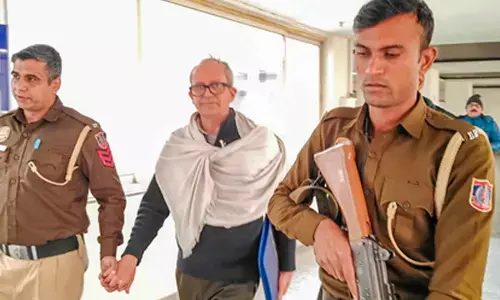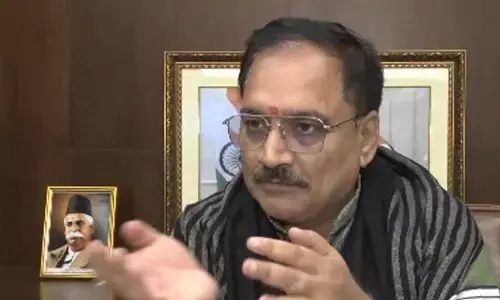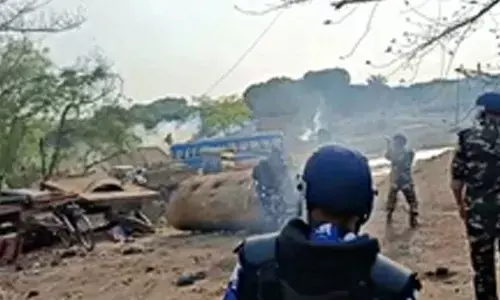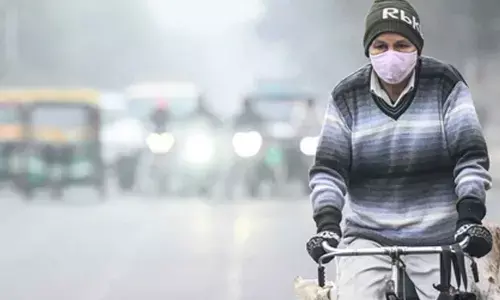Fukushima hotspots make headlines before Olympics, but what's the risk?

Warnings of radiation hotspots in parts of Fukushima that will host the Olympic torch relay and several sporting events have made headlines, but what is the risk for athletes and spectators?
Tokyo : Warnings of radiation hotspots in parts of Fukushima that will host the Olympic torch relay and several sporting events have made headlines, but what is the risk for athletes and spectators?
Since the 2011 tsunami that triggered the Fukushima nuclear accident, Japan has carried out extensive decontamination in affected areas and lifted evacuation orders.
It hopes the Games will showcase recovery in areas devastated by the tsunami that left over 18,500 people dead and missing, and unleashed the worst nuclear accident since Chernobyl.
But activists, including local NGOs and Greenpeace, have been vocally critical of government efforts and made a splash with the discovery last year of multiple radioactive hotspots near the start of the Olympic torch relay route.
Greenpeace nuclear campaigner Kazue Suzuki argues the Japanese government is "deceiving people" by underplaying what the NGO calls ongoing health risks.
"You don't have to be scared all the time, but you have to be aware of the risk," Suzuki told AFP.
At issue are patches of ground where Greenpeace said they detected radiation levels of 1.7 microsieverts per hour at one metre (one yard) above the surface.
That compares with the nationally allowed safety standard of 0.23 microsieverts per hour and a normal reading in Tokyo of around 0.04 microsieverts per hour. The hotspots showed a reading of 71 microsieverts per hour at the surface level, Greenpeace said.
"That's the tip of the iceberg, we think. There must be other hotspots," said Suzuki. "We request broader monitoring." Greenpeace argues the hotspots pose a threat less from radiation, but more if contaminated soil is inhaled in the form of dust.
"Chances (of adverse health effects) are very, very low, but you cannot deny the risk... you shouldn't just say there's no problem, especially with that high contamination," Suzuki said.
After the hotspots were detected, Tokyo Electric (TEPCO), the plant's operator, removed the contaminated topsoil, and government officials say the area is safe.
"Every time we consider the possibility of lifting an evacuation order, first of all decontamination takes place and thereafter stringent monitoring is conducted," Fukushima governor Masao Uchibori told journalists in February.
"In deciding the route for the torch relay, we conducted another round of monitoring in order to ensure the complete safety of the runners and spectators," he added.
And experts on radiation and the Fukushima accident say the risks posed by the hotspots are often misunderstood.
"I would not say that radiation is harmless, but it depends on the exposure dose," said Koichi Tanigawa, director of the Futaba Medical Centre Hospital in Fukushima.
While the hotspot readings are high, they pose no risk of "any radiation injuries or health effects," said Tanigawa, an expert on radiation emergencies who has worked in the region since the 2011 accident.
Tanigawa lives five miles from the nuclear plant and said his personal exposure has remained "lower than the annual exposure doses of the public in other countries".
"From a medical point of view, I do not think that there would be any adverse health effects to runners or spectators in Fukushima," he added.
'Risk is vanishingly small': Malcolm Sperrin, a professor of radiation medicine at Oxford University Hospitals, also argues the risk posed by the hotspots is minimal. "There is no doubt that everyone wishes that the radiation had not been released," he told AFP.
"But if you clean up properly and restrict access to the affected areas, then the actual risk is vanishingly small. Data on cancer in the affected area is not conclusive," said Tanigawa, but overall incidence and organ-specific rates are mostly lower than national levels.
Thyroid cancer levels are higher, but this may be the result of dedicated screening programmes which detected small cancers that might otherwise have gone unnoticed, he added.
Radiation readings should be understood in context, said Geraldine Thomas, director of the Chernobyl Tissue Bank and chair of molecular pathology at Imperial College London.
"Are these readings a surprise? No they are not. Is this a significant health concern? Absolutely not," she told AFP.
She said neither radiation nor inhalation of dirt from hotspots should be a concern for people.
"The doses that they would realistically be exposed to are minuscule compared with a return flight to Japan," said Thomas, an expert on radiation and thyroid cancer who has studied the Fukushima accident.
"You would be mad to turn down the chance of representing your country at the Olympics," she said.
















